Plantar Fasciitis is a common foot condition characterized by heel pain due to inflammation of the plantar fascia. Proper footwear, especially shoe insoles, plays a crucial role in alleviating symptoms.
Outline of the Article:
- Criteria for Selecting the Right Insoles
- Material Considerations
- Size and Fit
- Support Features
- Top Insoles Brands for Plantar Fasciitis
- Brand Overview
- Key Features
- User Experiences and Testimonials
- Personal Stories
- Expert Recommendations
- Maintenance and Care of Insoles
- Cleaning Tips
- Replacement Frequency
- Where to Buy the Best Arch Support Insoles for Plantar Fasciitis
Criteria for Selecting the Right Insoles
Material Considerations
- Cushioning: Look for materials that provide adequate cushioning. Memory foam and gel are popular choices, as they conform to the foot’s shape and provide relief from pressure points.
- Support: The material should offer good arch support to help distribute weight evenly across the foot. Rigid materials like hard plastic or carbon fiber are often used in the arch area for added support.
- Durability: Consider the lifespan of the material. Denser materials like polyurethane tend to last longer than softer ones like foam, which may compress over time.
- Breathability: Materials that allow air circulation help keep the feet dry and reduce the risk of odor and infections. Fabrics like mesh or certain porous foams are good for breathability.
- Moisture-wicking: Materials that wick away moisture keep feet dry and comfortable. This is particularly important for those who are active or have sweaty feet.
- Hypoallergenic: For those with sensitive skin, hypoallergenic materials that prevent allergic reactions are important.
- Eco-friendliness: Some may prefer materials that are environmentally friendly or sustainably sourced.
Size and Fit
Size and fit are critical factors to consider when selecting shoe insoles, especially for those with plantar fasciitis. An improperly sized or ill-fitting insole can exacerbate foot issues rather than alleviate them. Here are some key points to keep in mind:
- Correct Sizing: Insoles come in various sizes, often corresponding to shoe sizes. It’s important to choose an insole that matches your shoe size to ensure proper coverage and support. Some insoles are trimmable for a more customized fit.
- Foot Arch Type: Insoles are designed for different arch types: low, medium, and high. Using an insole that matches your arch type ensures better support and comfort.
- Heel Support: The insole should snugly cup the heel. This provides stability and helps in aligning the foot correctly, which is essential for relieving plantar fasciitis symptoms.
- Toe Room: Ensure there is enough room at the toe area of the insole. It shouldn’t crowd the toes or push against them, as this can lead to discomfort or other foot problems.
- Width and Volume: Some insoles are designed for shoes with more volume, like boots or sports shoes, while others fit better in low-volume footwear like dress shoes. The width of the insole should also match the interior of your shoe for a comfortable fit.
- Flexibility: The insole should flex with your foot. Overly rigid insoles can be uncomfortable, while too flexible ones may not provide adequate support.
- Adjustment Period: It may take time to adjust to new insoles. Start by wearing them for a few hours a day and gradually increase the duration.
- Compatibility with Existing Foot Conditions: If you have specific foot conditions other than plantar fasciitis, such as bunions or hammertoes, make sure the insole accommodates these without causing additional discomfort.
Support Features
When selecting shoe insoles for plantar fasciitis, the support features they offer are paramount. These features are designed to alleviate pain, provide comfort, and correct foot alignment. Here are some essential support features to consider:
- Arch Support: Proper arch support is crucial for plantar fasciitis sufferers. Insoles should have a well-defined arch that matches the contours of your foot. This helps in distributing pressure across the foot rather than concentrating it on the heel and forefoot.
- Heel Cup: A deep heel cup in the insole provides stability and helps position the heel to naturally absorb impact. This feature is particularly beneficial in minimizing the stress on the plantar fascia.
- Cushioning: Adequate cushioning, especially in the heel area, can greatly reduce the impact on the foot while walking or running. Materials like gel or memory foam are commonly used for effective cushioning.
- Metatarsal Pad: A metatarsal pad helps redistribute weight away from the ball of the foot and can be especially helpful for those with forefoot pain or metatarsalgia in addition to plantar fasciitis.
- Motion Control and Stability: Some insoles offer features that help control excessive foot motion, such as overpronation, which can contribute to plantar fasciitis. Reinforced areas or structured heel designs are common for this purpose.
- Material Firmness: The firmness of the material should provide a balance between support and comfort. Too soft, and it might not offer enough support; too rigid, and it might be uncomfortable.
- Shock Absorption: Look for insoles that have good shock-absorbing properties. This is particularly important for athletes or those who engage in high-impact activities.
- Contoured Footbed: An insole with a contoured footbed is shaped to fit the natural curves of your foot. This design can enhance comfort and support throughout the foot.
Top Insoles Brands for Plantar Fasciitis
Atlas Arch Support:
- Specialization: Atlas Arch Support is known for its focus on providing exceptional arch support, crucial for those suffering from plantar fasciitis.
- Key Features: These insoles typically feature a strong, yet comfortable arch support, a deep heel cup for stability, and durable materials for long-lasting use. They are designed to fit a range of shoe types and cater to different foot shapes.
- Target Audience: Ideal for individuals who require enhanced arch support, including athletes, professionals who stand for long hours, and those with severe plantar fasciitis.

Superfeet:
- Reputation: Superfeet is renowned for its wide range of insoles catering to various needs, including plantar fasciitis relief.
- Variety: They offer insoles with different levels of cushioning, arch heights, and shapes, making them a versatile choice for diverse foot types.

Dr. Scholl’s:
- Accessibility: Known for being widely available and offering a range of affordable options.
- Customization: Dr. Scholl’s offers custom fit orthotic kiosks in many stores, providing personalized insole recommendations.
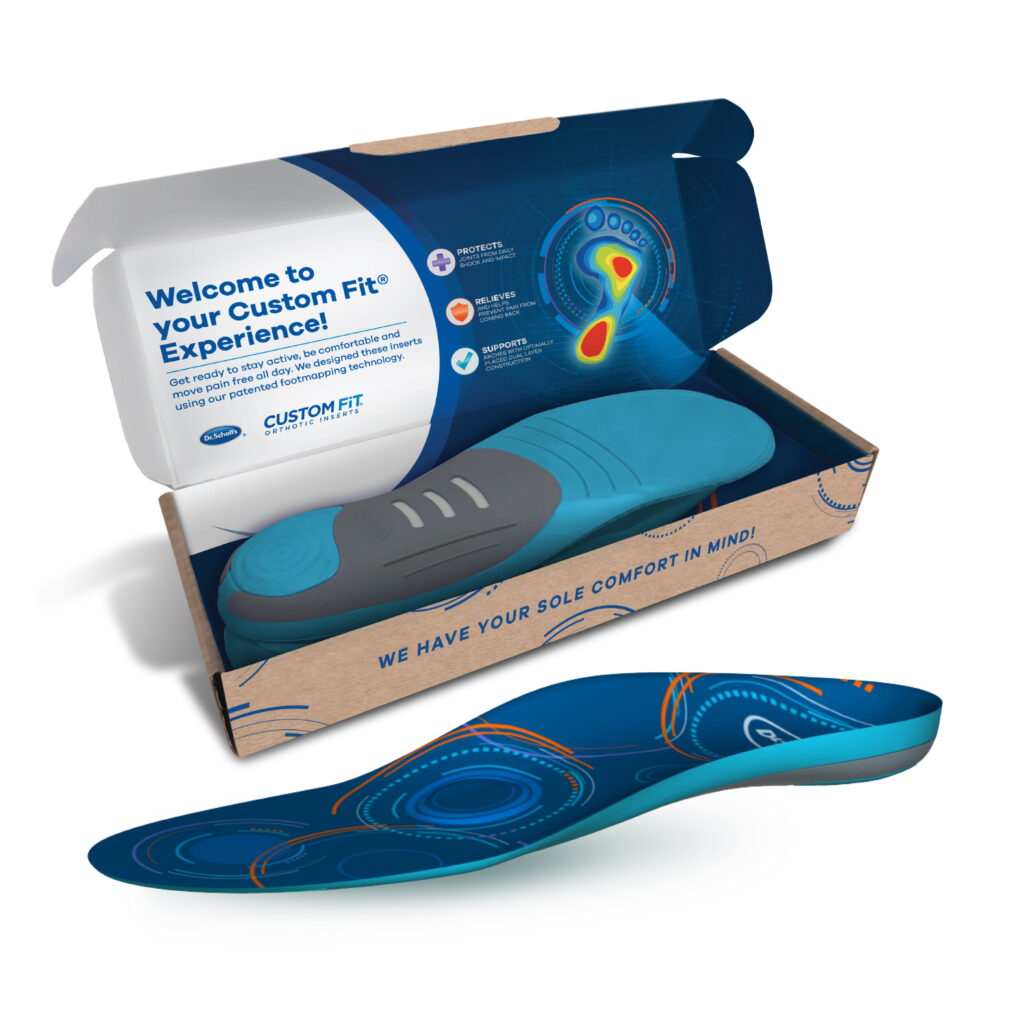
Powerstep:
- Professional Endorsement: Often recommended by podiatrists for their supportive design and clinical effectiveness in managing foot pain.
- Features: Powerstep insoles usually feature a combination of strong arch support, heel cradles, and cushioning layers.
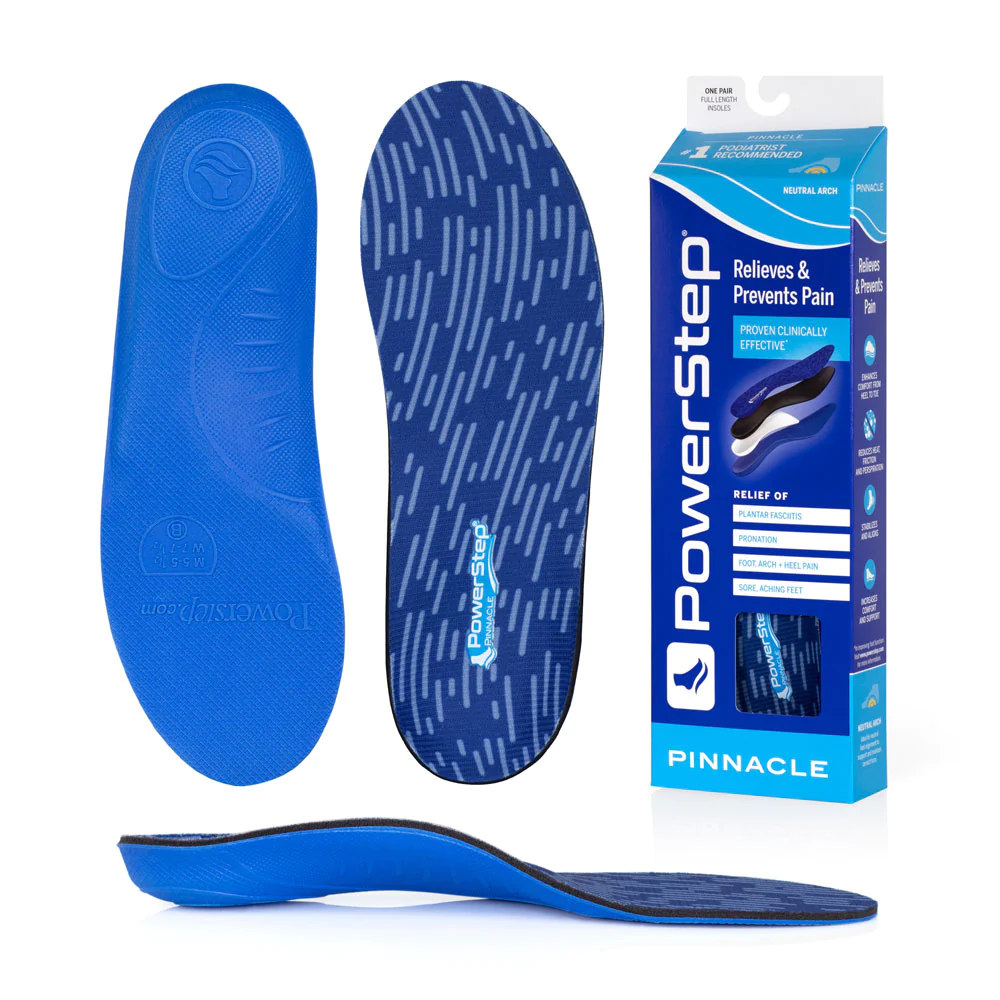
Sole:
- Eco-Friendly Options: Known for their environmentally conscious approach, using sustainable materials.
- Heat-Moldable Technology: Their insoles can be heat-molded for a custom fit, which is a unique feature.
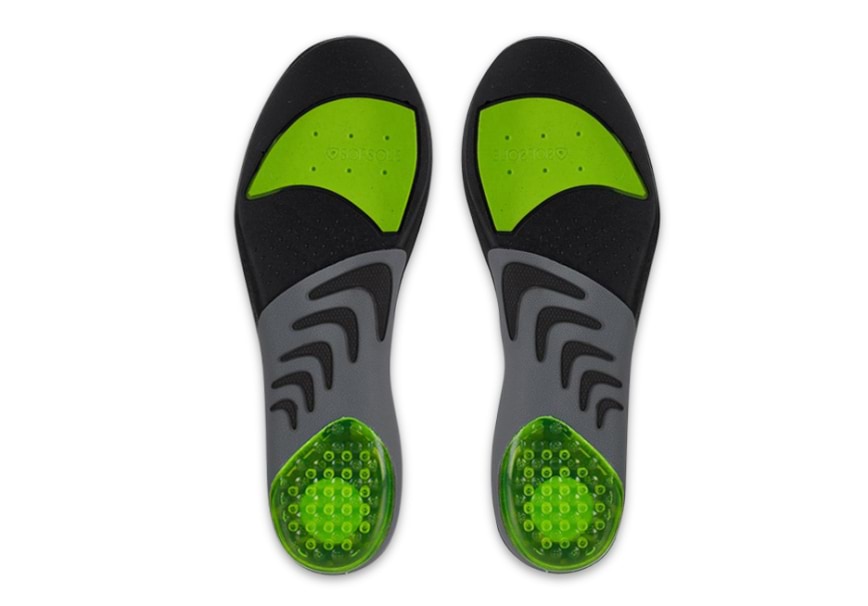
Spenco:
- Comfort Focus: Spenco insoles are celebrated for their superior cushioning and comfort.
- Variety: They offer a range of insoles, including those specifically designed for athletic activities.
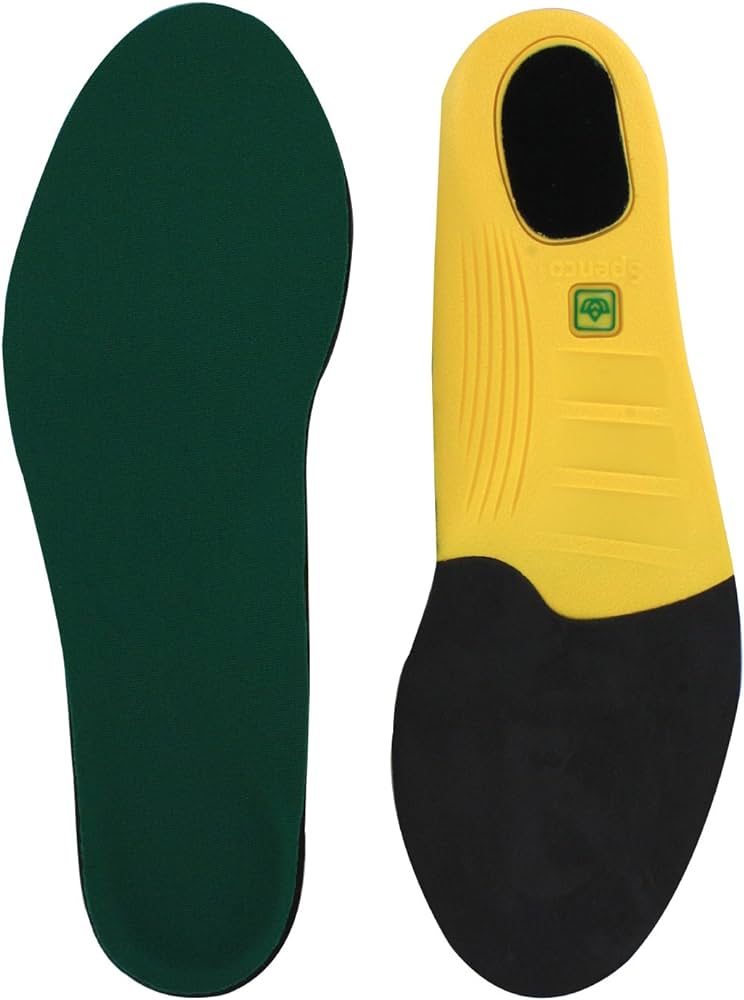
User Experiences and Testimonials
Personal Stories
- Marathon Runner’s Relief:
- Background: A long-distance runner developed plantar fasciitis due to excessive training.
- Experience: They started using a pair of Atlas Arch Support insoles recommended by their podiatrist.
- Outcome: The insoles provided the necessary arch support and cushioning, significantly reducing heel pain. The runner was able to continue training and completed their next marathon with much less discomfort.
- Office Worker’s Transformation:
- Background: An office worker, spending long hours on their feet, began experiencing sharp heel pain.
- Experience: After trying several over-the-counter insoles, they found a pair that offered a good balance of cushioning and support, fitting perfectly in their work shoes.
- Outcome: The insoles alleviated the pain within a few weeks, and the individual reported improved comfort during their workday.
- Daily Walker’s Journey:
- Background: A retiree who enjoys daily walks started feeling pain in the arch and heel area.
- Experience: They opted for insoles with a deep heel cup and metatarsal pad, based on a recommendation from a fellow walking club member.
- Outcome: The new insoles provided relief from the arch pain and made walking enjoyable again. They also noticed an improvement in their walking posture.
- Athlete’s Comeback:
- Background: A collegiate athlete faced plantar fasciitis, jeopardizing their sports career.
- Experience: They began using custom-fitted insoles alongside physical therapy.
- Outcome: The combination of therapy and supportive insoles helped them make a successful comeback to competitive sports, with significantly reduced foot pain.
- Senior Citizen’s Improvement:
- Background: A senior citizen with plantar fasciitis struggled with daily activities due to foot pain.
- Experience: They switched to a pair of soft, cushioned insoles that were easy to insert into various shoe types.
- Outcome: These insoles provided the comfort needed for daily activities, reducing the pain and improving mobility.
Expert Recommendations
- Custom vs. Over-the-Counter Insoles:
- Experts often suggest trying over-the-counter insoles first, as they can be effective and are more affordable.
- For severe cases or unique foot structures, custom orthotics recommended by a podiatrist may be necessary.
- Importance of Arch Support:
- Proper arch support is crucial for alleviating plantar fasciitis pain. Experts recommend insoles that match the user’s arch type (low, medium, or high) for optimal support.
- Heel Support and Cushioning:
- A deep heel cup and adequate cushioning, especially in the heel area, are essential. These features help absorb shock and stabilize the foot.
- Material Quality:
- High-quality materials that provide a balance of support and cushioning are recommended. Durable materials like EVA or polyurethane are often preferred.
- Correct Fit:
- Insoles should fit the shoe properly without crowding the foot. Experts advise checking the size and trimming the insole if necessary for a perfect fit.
- Consideration of Activity Level:
- The choice of insole can depend on the individual’s activity level. Athletes might need more shock absorption, while office workers might prioritize comfort and support.
- Regular Replacement:
- Insoles wear out over time. Experts recommend replacing them every 6 to 12 months, depending on usage, to maintain effectiveness.
- Holistic Approach:
- Insoles are part of a broader treatment approach. Experts often suggest combining them with stretching exercises, proper footwear, and possibly physical therapy.
- Adaptation Period:
- There might be a short period of adaptation as the feet get used to the new insoles. Experts suggest gradually increasing wear time over a few days.
- Consultation for Specific Needs:
- Individuals with specific health conditions like diabetes, arthritis, or different foot deformities are advised to consult with a healthcare provider before choosing insoles.
Maintenance and Care of Insoles
Cleaning Tips
- Regularly Remove Insoles: Start by taking the insoles out of your shoes regularly. This allows them to air out and prevents the buildup of moisture and bacteria.
- Hand Wash Gently: Most insoles should be hand-washed. Use a mild soap or detergent and lukewarm water. Avoid using harsh chemicals or bleach as they can damage the material of the insole.
- Soft Brush for Stubborn Dirt: If there’s stubborn dirt or debris, use a soft-bristled brush, such as a toothbrush, to gently scrub the insoles. Be cautious not to be too rough, especially on softer materials.
- Rinse Thoroughly: After washing, rinse the insoles thoroughly to ensure all soap is removed. Remaining soap residue can cause skin irritation.
- Air Dry Completely: Always air dry your insoles completely before placing them back in your shoes. Avoid direct heat or sunlight, as these can warp or shrink some materials. Drying in a well-ventilated area is best.
- Avoid Machine Washing/Drying: Unless the manufacturer specifically states that the insoles are machine washable, avoid using a washing machine or dryer as they can damage the insoles.
- Deodorize Naturally: To deodorize insoles, you can sprinkle baking soda on them and let them sit overnight. Vacuum or shake off the baking soda before using them again.
- Regular Replacement: Sometimes insoles cannot be thoroughly cleaned or start to wear down. In such cases, consider replacing them.
- Avoid Water for Leather Insoles: If your insoles are made of leather or other materials that shouldn’t get wet, clean them with a suitable leather cleaner and conditioner instead.
- Disinfecting: For disinfection, you can lightly spray a mixture of vinegar and water on the insoles. However, check if your insole material is compatible with this solution.
Replacement Frequency
- Daily Wear and Tear: If you wear your insoles daily, especially in conditions that exert a lot of pressure on your feet (like running or long periods of standing), you might need to replace them every 3-6 months.
- Material Degradation: Pay attention to the material of the insoles. Softer materials like foam can compress over time, losing their cushioning and support. When you notice significant wear or thinning, it’s time for a replacement.
- Changes in Foot Comfort or Support: If you start experiencing discomfort or pain that was previously alleviated by your insoles, this could be a sign that they’re no longer providing adequate support.
- Visible Wear: Look for visible signs of wear such as cracks, tears, or the breakdown of the material. Insoles that look worn out probably are.
- Odor and Hygiene: Over time, insoles can harbor bacteria and develop an odor that might not go away with cleaning. If they begin to smell bad even after cleaning, consider replacing them.
- Following Manufacturer’s Recommendations: Some insole manufacturers provide guidelines on replacement frequency. Check the product information for specific advice.
- Activity Level: Athletes or individuals with high-impact activities may need to replace their insoles more frequently due to increased stress and wear.
- Personal Comfort Needs: Everyone’s feet are different. If you have specific foot conditions or heightened sensitivity, you may need to replace your insoles more frequently to maintain comfort.
- Changes in Foot Structure or Needs: If your foot structure changes due to factors like weight loss, weight gain, or pregnancy, or if your foot health needs change, you might need new insoles to match these changes.




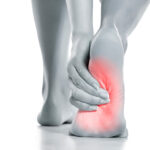
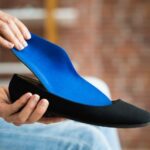
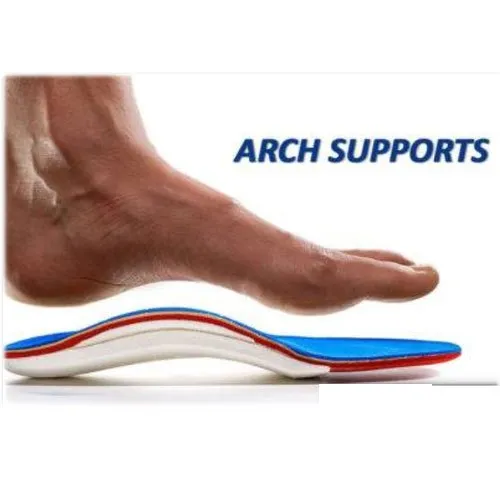


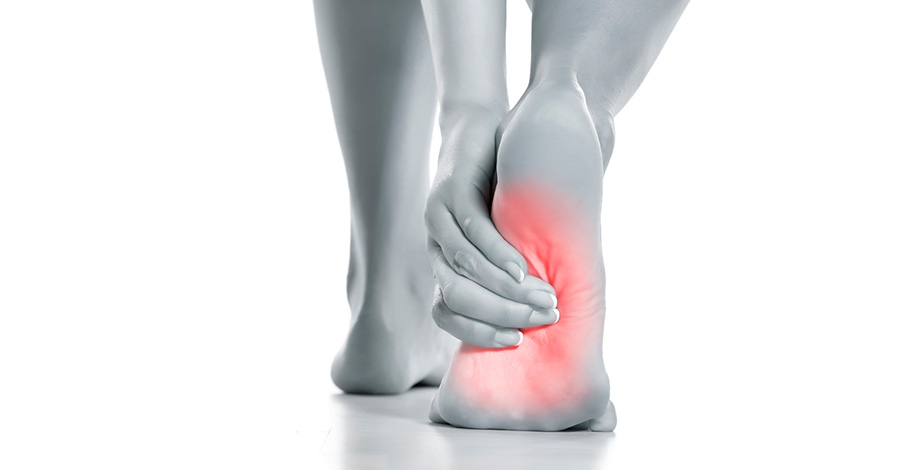
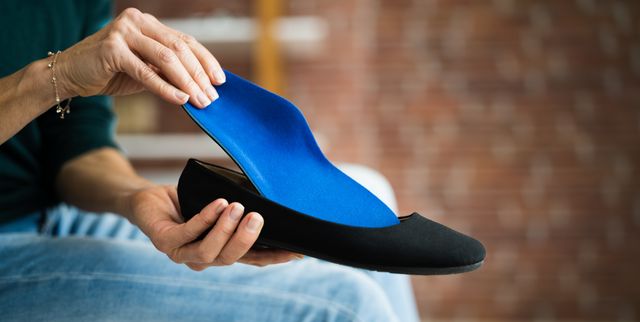
Your blog is a testament to your passion for your subject matter. Your enthusiasm is infectious, and it’s clear that you put your heart and soul into every post. Keep up the fantastic work!
Hello! This iss my first visit too yur blog! We arre a group of volunbteers annd starting a new project inn a community in thhe same niche.
Your blog profided uus valuablee injformation too work on. Youu hve done a extraordinary job!